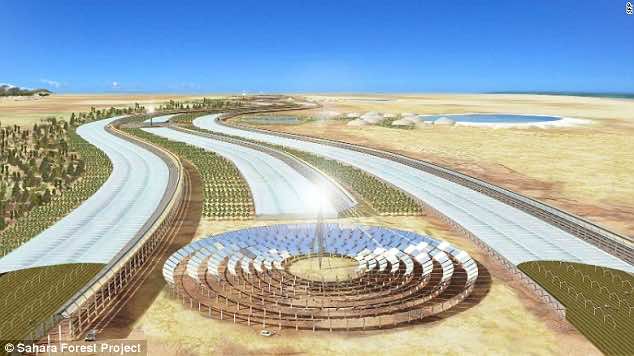Sahara desert is the largest sandbox in the world. It covers an astonishing 9.4 million square kilometers in the mid-western part of Africa and is growing each year. To give a rough estimate of its size, the mainland United States is just 8 million square kilometers. It is a harsh, unforgivable landscape with sand storms and mercury shooting up more than 122-degree Fahrenheit in the daytime. But, we have seen what the sheikhs have been able to achieve in the United Arab Emirates’ cities like Dubai and Abu Dhabi. So, some optimistic investors have started a new project called Sahara Forest Project (SFP) and aim to bring cultivation back to the ever-expanding desert. They want to build a farm and will reportedly invest more than 30 million $ into it.
In a bid to diversify the environment and bringing jobs to the local economy, the SFP will focus on two raw materials readily available in any desert; Sunlight and saline water. They aim to harness solar energy in various ways from cooking and heating to power generation. Saline water, they will have to treat through reverse osmosis, distillation or other modern methods. The bottom line is to start a financially viable system that will provide food and jobs for the people and start forestation of the large expanse of the desert in the long-term. The unprocessed water will also be used to cool down the sheds where crops are grown. The first project is set to be launched in Tunisia where there is an acute shortage of water, and much of the country is overrun with sand. The project has the full support of the Tunisian government which is working frantically to reduce the effects of global warming in the already hot desert areas.
King Abdullah University of Science and Technology Professor Heribert Hirt believes that the area has the same problems like the ones that will face astronauts trying to cultivate on Mars. The dust and sandstorms throughout the deserts cover much of the solar panels and necessary equipment with layers of particulates that affect their operation. But, he also believes that we have to try to make it happen because the desert is predicted to grow and eventually fill in the entire continent. The SFP project plans to have a 4,000-hectare facility, provide jobs to 6,000 people and produce almost 170,000 tonnes of food per year. As the professor said, it needs to be done, no matter the cost.

